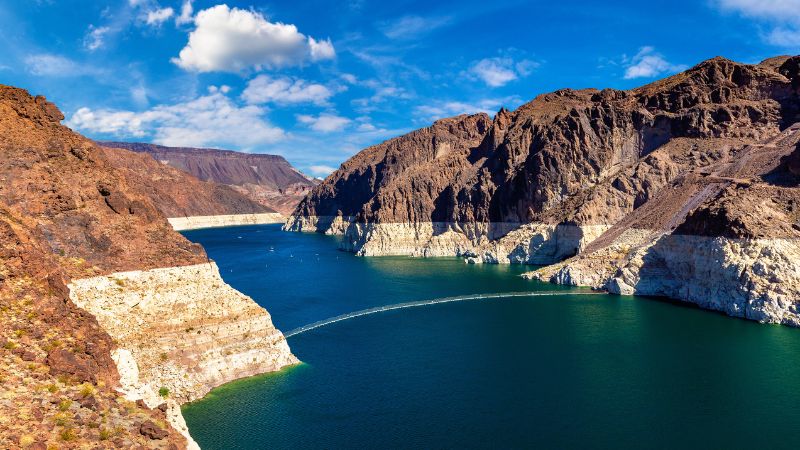In the heart of the American Southwest lies Lake Mead, a vital reservoir on the Colorado River that sustains millions of people across Nevada, Arizona, and California. But in recent years, this lifeline has been experiencing unprecedented changes in water levels, leaving experts and communities alike grappling with the implications.
The situation unfolding at Lake Mead is emblematic of the broader challenges facing water management in a changing climate. The reservoir, created by the Hoover Dam in the 1930s, has long been a cornerstone of regional water supply, irrigation, and hydroelectric power generation. However, the past decade has seen a rapid decline in its water levels, reaching historic lows not witnessed in generations.

At the heart of this issue is the delicate balance between supply and demand. As temperatures rise and precipitation patterns shift, the flow of the Colorado River – Lake Mead’s primary source – has become increasingly unpredictable. Coupled with growing urban populations and agricultural demands, this imbalance has put immense pressure on the reservoir’s finite resources.
The ramifications of Lake Mead’s dwindling water levels are far-reaching. Beyond the immediate concerns for water supply, there are ecological impacts to consider. The reservoir supports a delicate ecosystem, providing habitat for numerous species of fish, birds, and other wildlife. As water levels recede, these habitats shrink, leading to disruptions in migration patterns and potentially irreversible damage to biodiversity.
Furthermore, the economic implications are significant. The recreation industry, which relies heavily on Lake Mead’s waters for boating, fishing, and tourism, is already feeling the effects of shrinking shorelines and marinas forced to relocate or close altogether. Additionally, hydropower generation – a cornerstone of the region’s energy infrastructure – faces challenges as water levels drop, impacting both electricity supply and regional economies.
In response to these challenges, stakeholders are being forced to reconsider traditional approaches to water management. Conservation measures, such as water recycling, drought-resistant landscaping, and more efficient irrigation techniques, are becoming increasingly essential. Additionally, there is growing interest in exploring alternative water sources, such as desalination and groundwater replenishment, to supplement dwindling surface water supplies.
However, addressing the root causes of Lake Mead’s water woes will require a coordinated, multi-faceted approach. Collaboration between states, tribal nations, and federal agencies is paramount, as is engaging with local communities and stakeholders to develop sustainable solutions that prioritize long-term resilience over short-term gains.

While the challenges facing Lake Mead are daunting, they also present an opportunity for innovation and adaptation. By embracing new technologies, policies, and attitudes towards water use, we can chart a course towards a more sustainable future for this vital resource. The time to act is now, before the waters of Lake Mead recede beyond recovery.


